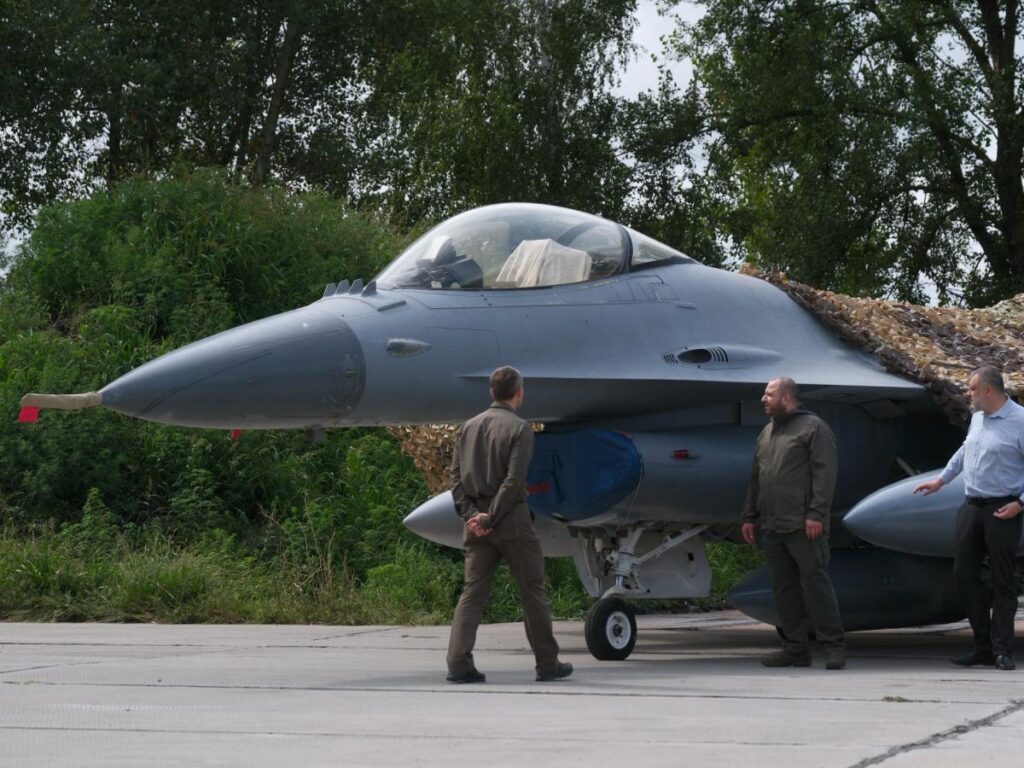The ongoing conflict in Ukraine has sparked a significant debate regarding the use and survivability of Western weaponry, including advanced tanks and fighter jets, supplied to assist Ukrainian forces. Experts have warned that the harsh realities of warfare mean that these sophisticated weapons, such as the Abrams tanks and F-16 fighter jets, are unlikely to survive until the war’s conclusion if deployed effectively. According to Michael Bohnert, a warfare specialist at RAND Corporation, the very premise of these military assets is that they are intended to be used aggressively; should any of them remain untouched by the end of the conflict, it would imply they were not utilized to their full potential. This stark reality prompts a critical examination of how Ukraine can balance the necessity of maximizing their advantages with the inherent risks of loss in combat.
The necessity for Ukraine to take risks with its newly acquired Western equipment stems from the limited quantities provided. Weapons such as F-16s and Abrams tanks have been delivered in small numbers, a situation that constrains strategic options. William Alberque from the Stimson Center pointed out that utilizing these platforms to their maximum potential will almost certainly lead to their destruction in combat. However, he emphasized that such losses can be justified if they enable Ukraine to inflict significant damage on Russian forces. The concept of giving military assistance should come with the understanding that damaged or destroyed equipment is part of the reality of warfare. Therefore, a mentality of pragmatism and acceptance of losses is essential for both the West and Ukraine.
An examination of the psychological impact of losing high-profile assets also comes into play. Bohnert raised concerns that potential propaganda victories for Russia, stemming from the destruction of assets like F-16s or tanks, could cloud important decision-making in the West concerning military support. He reminded that similar doubts during World War II failed to deter ongoing support for Allied efforts. Understanding the importance of losses in the context of total warfare can alleviate concerns regarding the narrative that might arise from losing equipment in battle. The goal, ultimately, is to ensure Ukraine’s strategic objectives are met in defeating Russian aggression, ensuring that manageable losses are accepted.
The Ukrainian conflict has reached unprecedented levels of intensity, both in terms of casualties and equipment loss, reminiscent of the catastrophic fights of World War II. Historical parallels reveal a stark contrast with more recent Western engagements, often characterized by relatively low casualty rates. Bohnert noted this anomaly, stating that the high-stakes environment and the toll it takes on personnel and resources can quickly drain reserves. This grim environment reflects a broader understanding of warfare: that losses—human and material—are an inherent part of military conflict. As such, Western partners should not panic merely because of lost assets, but rather focus on the necessity to inflict damage on the enemy.
Moreover, the types of military equipment provided to Ukraine are not the latest and greatest models, raising questions as to whether their deployment should be restricted. The Abrams tanks and F-16s being sent are older variants without the latest upgrades, meaning that while they are capable, they do not represent the pinnacle of military technology. Alberque argues for a more aggressive strategy in utilizing these weapons, stating that keeping them in reserve minimizes their utility. The West is essentially providing equipment that it believes it can afford to lose, so strategically aggressive deployment could lead to a larger cumulative impact on Russian forces.
Ultimately, Ukraine faces a unique predicament in this war, balancing the need for effective defensive and offensive strategies with the risks of deploying the limited, albeit powerful, Western equipment in its arsenal. The stark acknowledgment that losses are inevitable should inform both strategic military planning and the outlook of Western support. Both Bohnert and Alberque contend that the path ahead requires an acceptance of risk; if the ultimate aim is to secure victory for Ukraine against Russian forces, then embracing the harsh truths of modern warfare is imperative. Historical and present contexts reveal that the effort must transcend mere preservation of assets, as the fight for freedom and sovereignty often necessitates sacrifice and bold action.

